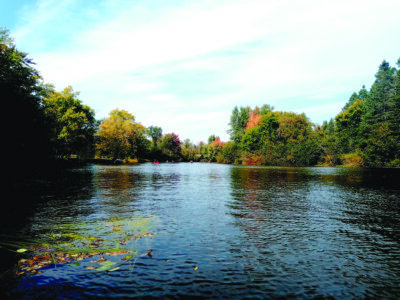From the Pacific to Superior: Species of salmon/Tom Rozich
The fall of the year signals the return of salmon to their stream of birth and when they are targeted by anglers. In many of our area streams, we have Pacific salmon of the genus Oncorhynchus, which we will look at for your fish biology lesson this month.
Salmon is the common name for several species of fish in the family Salmonidae, which includes chars, graylings, salmon, trout, and whitefishes. There are 11 genera (a group have similar characteristics) and 218 species in this large family.
There are seven species of Pacific salmon in the genus Oncorhynchus, which is from the Greek onkos (hook) and rynchos (nose) and refers to the hooked snout (also called a kype) the male’s develope during spawning. The native range includes the northern Pacific Ocean, Bering Strait, and southwest Beaufort Sea. They have been transplanted to many areas of the world, most notably the Great Lakes. Six of these species are native to the western shore of North America. The seventh, the masu or cherry salmon is found in East Asian waters of the Pacific from Kamchatka (Russia) south to Korea and Japan.
The six species are Chinook or King, Coho or Silver, Chum or Dog, Sockeye or Red, Pink or Humpback, and Rainbow Trout or Steelhead. We will discuss the five salmon separately, as they all have different life strategies. They all have the same basic life history, spawning in the fall, eggs incubating over winter, and hatching in the spring. Then each species spends a different length of time in fresh water before migrating and salt water before returning to spawn. All Pacific salmon die after spawning, which is Mother Nature’s way of returning nutrients to streams. They are all anadromous, which means they migrate from salt water to fresh water to spawn. In our Great Lakes they are called potamodromous, meaning migrations within fresh water. The third type of spawning behavior is catadromous, which means migration from fresh water to salt for spawning. The American eel is this type of fish.
The Chinook or King salmon is the largest of the genus or group, averaging 10-15 pounds. The world sport fishing record is 97.25 pounds from the Kenai River, Alaska. The largest caught commercially was 126 pounds from Rivers Inlet, British Columbia. Chinook spend only months in their birth stream before migrating to salt water and then spend 1-8 years (average 3-4 years) there before returning. The Yukon River Kings migrate 1,900 miles from the Bering Sea to upstream of Whitehorse, Yukon.
The Coho or Silver salmon average 6-12 pounds. The world record hook and line is 34 pounds from the Salmon River, a Lake Ontario tributary in upstate New York. Young Coho spend 1-2 years in their natal stream before migrating to the ocean. They spend from 1-4 years in the ocean or Great Lakes before returning to spawn. Some males return after 1 year and are called jacks, which is true for all Pacific salmon, except Pinks.
The Sockeye or Red salmon average 5-8 pounds. The name Red comes from the brilliant crimson they turn during the spawning run. The world record is 15.3 pounds and was caught in the Kenai River, Alaska. Sockeye have an unusual life history, spawning in rivers, and then moving into a lake in the river system, where they spend 1-3 years before returning to the ocean. They are favored as food, with most canned salmon being sockeye.
Chum or Dog salmon average 10-15 pounds, being the second largest of the group. The name Dog salmon comes from two facts, one being the male grows very large teeth during the spawning run and they are dried and fed to sled dogs, as they are not the best table fare. However, the Chum salmon roe is the most favored as caviar of all the salmon. The world record is 42 pounds caught at Edie Pass, British Columbia. Once the eggs hatch in the spring, the young salmon out migrate to the ocean immediately, where they spend 1-7 years before returning to their native river.
The Pink or Humpback salmon are the smallest of the genus, averaging 3-5 pounds. The name pink comes from their diet of shrimp and krill which produces a pinkish flesh. The name humpback comes from the large hump the males develop during spawning. The world record pink weighed 14.49 pounds and was caught in the Skykomish River, Washington. Pinks are the only salmon which do not run every other year. Once they hatch in the river, they out migrate immediately and spend two years in the ocean, thus the alternate year runs.
In Michigan we have Chinook, Coho, and Pink salmon in the Great Lakes, the latter being accidently introduced by Canadian officials. While loading them onto a float plane in Thunder Bay, Ontario destined for an inland lake, some milk cans full of fry were tipped over into Lake Superior and the rest is history.
Go Fish!





